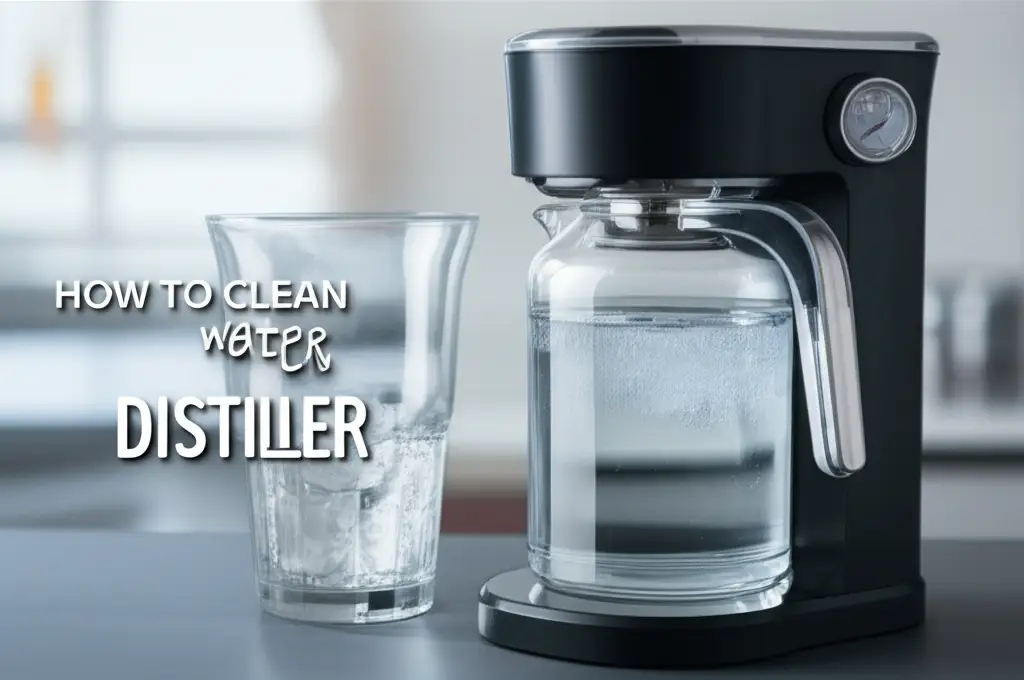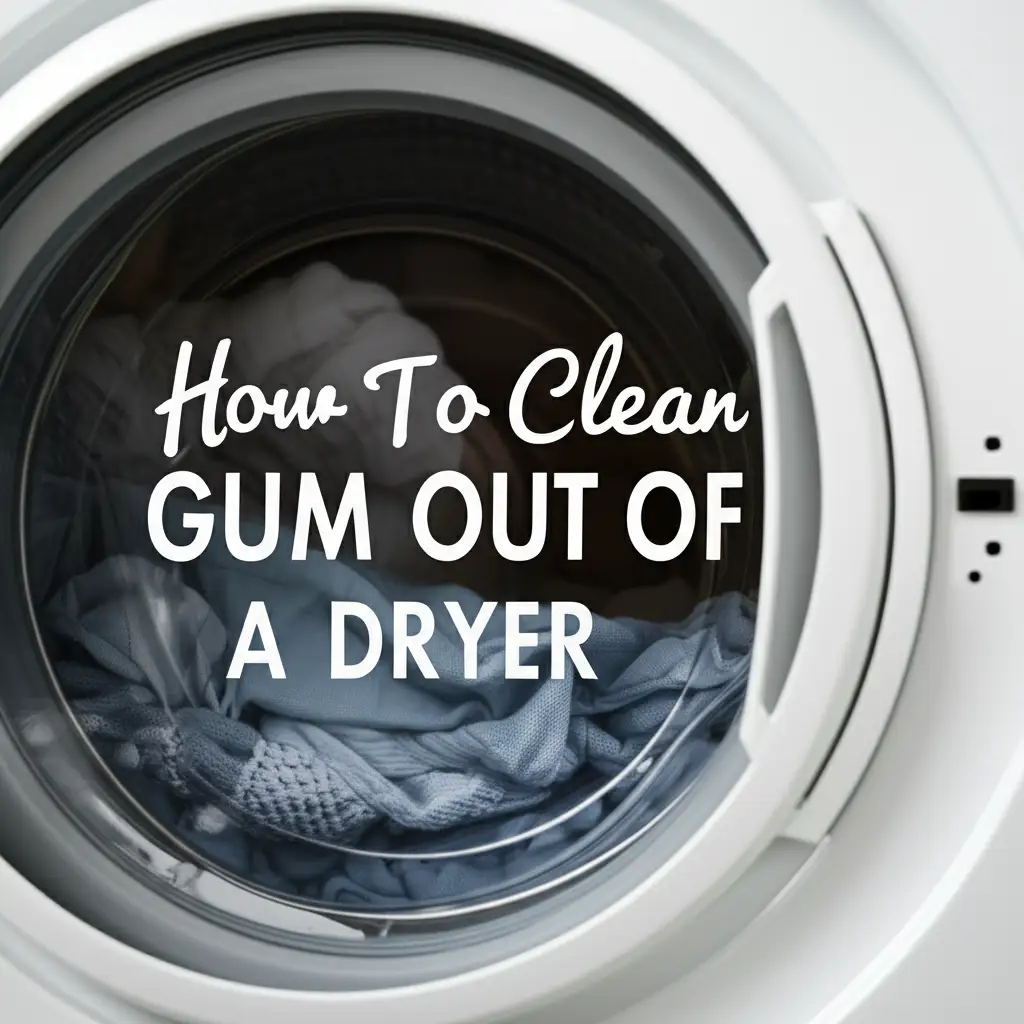· Home Appliance Care · 15 min read
How To Clean Washing Machine Drum

Keep Your Washer Fresh: How To Clean Washing Machine Drum
Is your laundry coming out less than fresh? Does your washing machine have a lingering smell? If so, the problem often lies within the drum itself. A dirty washing machine drum collects detergent residue, fabric softener, dirt, and even mold over time. This buildup creates unpleasant odors and can transfer grime back onto your clothes. I learned this the hard way when my “clean” clothes started smelling musty.
Maintaining a clean washing machine drum is crucial for effective laundry results and for extending the life of your appliance. Regularly cleaning the drum ensures that your clothes come out truly clean and smelling fresh. This article will guide you through the process, covering why it is important, what supplies you need, and how to clean both front-load and top-load washing machine drums. You will learn easy steps to keep your machine in top condition, making laundry day much better.
Takeaway:
- Regularly clean your washing machine drum to prevent odors and residue buildup.
- Use natural solutions like vinegar and baking soda for effective cleaning.
- Address specific areas like the detergent dispenser and rubber gasket during cleaning.
To clean a washing machine drum, run an empty hot water cycle using a cleaning agent like white vinegar, baking soda, or a commercial washer cleaner. For front-loaders, pay special attention to the door gasket. For top-loaders, clean the agitator and dispenser areas thoroughly. Regular cleaning prevents odors and residue buildup.
Why Cleaning Your Washing Machine Drum Matters
A clean washing machine drum is fundamental for clean clothes. Over time, moisture, detergent, and fabric softener residues accumulate inside the drum. This creates a breeding ground for bacteria, mold, and mildew. You might notice a musty smell emanating from your machine or even from your freshly washed laundry.
This buildup impacts the washing machine’s efficiency. It can clog parts and reduce the machine’s ability to clean clothes effectively. Dirt and grime transfer back onto your clothes during cycles. This leaves them looking dull or smelling less than clean. I always tell my friends that a clean machine means truly clean clothes.
Ignoring drum cleaning also shortens your appliance’s lifespan. Residue can corrode components or cause blockages. Regular maintenance prevents these issues, saving you money on repairs or early replacement. You ensure your investment lasts longer.
Ultimately, cleaning your washing machine drum improves your laundry results. It eliminates odors and helps your clothes come out fresh and spotless. It also maintains a hygienic environment for washing your garments. This simple task makes a big difference.
Common Signs Your Washer Drum Needs Cleaning
Your washing machine often gives clear signals when its drum needs attention. Paying attention to these signs helps you know when to act. The most obvious indicator is a persistent unpleasant odor. This smell often has a musty or mildewy quality. It becomes noticeable when you open the washer door or even when you unload clothes.
Another common sign is dirty or smelly laundry. If your clothes come out with dark spots, residue, or still smell musty after a wash, the problem is likely your machine. The grime inside the drum is transferring onto your garments. I once thought my detergent was bad, but it was just my machine.
Visible residue inside the drum or around the door seal is also a clear sign. You might see a slimy film, dark spots, or even flakes of buildup. This residue often collects in the creases of the rubber gasket on front-load washers. It also appears around the detergent dispenser. This buildup is a strong visual cue that cleaning is overdue. You might find a lot of mold if you do not regularly clean the drum. Learn how to clean mold from your washing machine effectively.
Finally, an increase in washing machine noise or vibrations can sometimes indicate a dirty drum. While not always directly related, excessive buildup can sometimes throw off the balance of the drum. This puts extra strain on components. Addressing the drum’s cleanliness can often resolve these issues, ensuring smoother operation.
Essential Tools and Supplies for Drum Cleaning
Gathering the right tools and supplies makes cleaning your washing machine drum much easier. You likely already have most of these items at home. The main cleaning agents are white vinegar and baking soda. These natural products are effective for breaking down grime and odors. I always keep a large bottle of white vinegar on hand for various cleaning tasks.
You will also need a few microfiber cloths. These are excellent for wiping down surfaces and absorbing spills. An old toothbrush or a small scrubbing brush is useful for reaching tight spots. These tools help you clean around the door gasket and detergent dispenser. A spray bottle can also be helpful for applying cleaning solutions.
For a deeper clean or stubborn buildup, you might consider using bleach. Bleach is a powerful disinfectant and helps remove mold and mildew. However, it requires careful handling and should never be mixed with vinegar. Always follow the manufacturer’s instructions when using bleach. Sometimes, I opt for a specific washing machine cleaner if the problem is severe. You can find these at most grocery or hardware stores.
Lastly, having protective gloves is a good idea. They protect your hands from cleaning agents and grime. A bucket for any dirty water or loose debris also proves useful. With these supplies, you are ready to tackle your washing machine drum.
Step-by-Step Guide: How to Clean Your Front-Load Washing Machine Drum
Cleaning a front-load washing machine drum involves a few key steps. These machines are prone to buildup around the door seal due to their design. I find that regular attention to this area makes a big difference. First, ensure the washing machine is empty. Remove any clothes or items from the drum.
Start by cleaning the rubber gasket around the door. This is where mold and mildew often accumulate. Pull back the folds of the gasket and wipe away any grime, hair, or residue using a damp cloth. You might need an old toothbrush for stubborn spots. For a deeper clean, spray the gasket with a mixture of equal parts white vinegar and water. Let it sit for a few minutes, then wipe thoroughly. This step is critical for eliminating odors. You can find more specific guidance on how to clean the rubber gasket in your washing machine.
Next, clean the detergent dispenser drawer. This drawer often collects sticky residue. Remove the drawer if possible and rinse it under hot water. Scrub away any buildup with a brush or cloth. For stubborn residue, soak the drawer in hot soapy water for 30 minutes, then scrub clean. Wipe down the opening where the dispenser sits as well.
Finally, run a cleaning cycle for the drum itself. Add two cups of white vinegar directly into the detergent dispenser or drum. Set the washing machine to its hottest water setting and the longest cycle available. Many machines have a “Tub Clean” or “Self-Clean” cycle. If yours does not, a normal heavy-duty cycle will suffice. After the cycle finishes, wipe down the inside of the drum with a clean cloth. This ensures no lingering residue remains.
Step-by-Step Guide: How to Clean Your Top-Load Washing Machine Drum
Cleaning a top-load washing machine drum is slightly different from cleaning a front-loader. Top-loaders usually have an agitator, and their drums tend to accumulate different types of residue. I find them a bit easier to clean inside. First, make sure your machine is completely empty of clothes. This ensures the cleaning solution can work effectively.
Begin by filling the washing machine drum with the hottest water setting. Fill it up to the highest water level. As the drum fills, add four cups of white vinegar directly into the water. Let the machine agitate for a minute or two to mix the vinegar. Then, pause the cycle and let the vinegar water sit and soak in the drum for at least an hour. This soaking period allows the vinegar to break down soap scum, mineral deposits, and mold.
While the vinegar soaks, clean the machine’s exterior and dispenser areas. Wipe down the lid, control panel, and the top rim of the drum. Pay attention to the detergent and fabric softener dispensers. These areas often accumulate sticky residue. You can remove the dispenser cups if possible and scrub them clean with hot water and a brush. If your top-loader has an agitator, you should also consider how to clean the agitator in your washing machine.
After the soaking time, restart the wash cycle and let it complete. Once the cycle finishes, wipe down the inside of the drum with a clean cloth. This removes any loosened grime. For a particularly dirty machine, you might repeat the process with a cup of baking soda added during the rinse cycle of the second wash. Remember that regular maintenance, like cleaning the drum, is key to keeping your top-load washing machine running well.
Natural Cleaning Methods: Vinegar and Baking Soda for Your Drum
Using natural cleaning agents like vinegar and baking soda is an effective and eco-friendly way to clean your washing machine drum. These common household items work together to tackle odors, soap scum, and mold. I often rely on this method because it is safe for my family and the environment. This combination is especially good for regular maintenance.
First, let us focus on white vinegar. Vinegar is acidic, which makes it excellent for dissolving mineral buildup and soap scum. It also acts as a natural disinfectant and deodorizer. To use it, add two cups of white vinegar directly into the detergent dispenser or the drum of your empty washing machine. Set the machine to the hottest water setting and the longest cycle available. If your machine has a “Tub Clean” cycle, use that. The hot water and vinegar will work together to sanitize the drum and break down accumulated grime.
Next, consider baking soda. Baking soda is a natural abrasive and powerful deodorizer. It helps scrub away residue and absorb lingering smells. After completing the vinegar cycle, add half a cup of baking soda directly into the drum of your empty machine. Run another hot water cycle, similar to the one you ran with vinegar. This second cycle helps to rinse away any remaining residue and further neutralize odors. For a comprehensive guide on this method, see how to clean your washing machine with baking soda and vinegar.
The combination of vinegar and baking soda creates a powerful cleaning action. Vinegar tackles the tough buildup, and baking soda absorbs odors and provides a gentle scrubbing effect. This natural approach leaves your washing machine drum sparkling clean and smelling fresh. It also avoids harsh chemicals.
Deep Cleaning with Bleach: When and How to Use It
Sometimes, your washing machine drum needs a stronger approach. Bleach can be very effective for deep cleaning, especially if you have significant mold, mildew, or stubborn odors. I use bleach occasionally for a thorough sanitization, but always with caution. Remember, never mix bleach with vinegar or any other cleaning product, as this can create dangerous fumes.
You should use bleach when you notice persistent mold growth, a very strong musty smell that natural methods cannot eliminate, or if the inside of your drum has visible dark spots that are not coming off. Bleach is a powerful disinfectant that kills bacteria, mold, and mildew. It also helps to whiten and brighten the drum’s interior. However, it is a strong chemical, so use it sparingly and correctly.
To deep clean your washing machine drum with bleach, start with an empty machine. Pour one cup of liquid chlorine bleach directly into the detergent dispenser or the bleach dispenser. Avoid pouring it directly onto the drum surface if possible, to prevent potential staining. Set the washing machine to its hottest water setting and the largest load size or longest cycle. Many modern machines have a “Clean Washer” or “Tub Clean” cycle that is perfect for this.
Allow the cycle to complete fully. The hot water and bleach mixture will circulate through the drum, lines, and pump. After the cycle finishes, run an additional plain rinse cycle. This ensures all bleach residue is thoroughly flushed out of the machine. It prevents any bleach from transferring to your clothes in the next wash. For more details on this method, refer to how to clean your washing machine with bleach. Always ensure proper ventilation when using bleach.
Preventative Measures for a Fresh Washing Machine Drum
Keeping your washing machine drum clean is not just about deep cleaning. It also involves adopting good habits that prevent grime and odors from building up in the first place. I found that a few simple changes in my routine made a big difference. These preventative measures save you time and effort in the long run.
First, always leave the washing machine door or lid open after each wash cycle. This simple action allows the interior of the drum to air dry completely. Moisture is the primary cause of mold and mildew growth. By letting it air out, you prevent that damp, musty environment. I always prop my front-loader door open after every load.
Second, use the correct amount of detergent. Many people use too much detergent, especially with high-efficiency (HE) machines. Excess detergent does not rinse away properly. It leaves a sticky residue inside the drum and hoses. This residue attracts dirt and can lead to odors. Always read your detergent’s instructions and measure carefully. Using less detergent often works just as well.
Third, regularly clean the detergent and fabric softener dispensers. These areas are notorious for accumulating sticky buildup. Wipe them down after every few washes. If your dispenser is removable, take it out and rinse it under hot water weekly. This prevents blockages and keeps the cleaning agents flowing smoothly.
Finally, run a maintenance cycle regularly. Aim to clean your washing machine drum with vinegar or a commercial cleaner once a month. This proactive approach tackles minor buildup before it becomes a major problem. By following these preventative steps, you will enjoy a consistently fresh and clean washing machine drum, and your clothes will thank you.
FAQ Section
How often should I clean my washing machine drum? You should aim to clean your washing machine drum monthly. If you do laundry frequently or live in a humid climate, consider cleaning it every two to three weeks. Regular cleaning prevents odors and residue buildup. This schedule helps keep your machine running efficiently.
What causes my washing machine drum to smell? Washing machine drums often smell due to a combination of factors. Leftover moisture, detergent residue, and fabric softener create a breeding ground for mold, mildew, and bacteria. These microorganisms produce the unpleasant, musty odors. Low wash temperatures can also contribute to this problem.
Can I use dishwasher tablets to clean my washing machine drum? Yes, you can use dishwasher tablets to clean your washing machine drum. Place two tablets directly into the empty drum and run a hot water cycle. Dishwasher tablets contain powerful detergents and enzymes that help break down grease and grime. They can be effective for a quick clean.
Is it safe to mix vinegar and baking soda for cleaning the drum? Yes, it is safe to use vinegar and baking soda in separate cycles to clean the drum. However, you should not mix them directly. The chemical reaction between them can neutralize their individual cleaning powers. Use vinegar in one cycle, then baking soda in a separate follow-up cycle for best results.
Why are my clothes still dirty after washing in a supposedly clean machine? If clothes are still dirty after washing in a clean machine, check a few things. You might be overloading the machine. Overloading prevents proper agitation and rinsing. Also, ensure you are using the correct amount of detergent for your water type and load size. Hard water can sometimes reduce cleaning effectiveness.
How do I prevent mold from growing in my washing machine drum? Prevent mold growth by always leaving the washing machine door or lid open after each cycle. This allows the drum to air dry. Wipe down the rubber gasket regularly, especially in front-load machines. Use high-efficiency detergent if you have an HE machine. Also, run a hot water cleaning cycle monthly.
Conclusion
Keeping your washing machine drum clean is an essential part of home maintenance. It ensures your clothes come out truly fresh and helps extend the life of your appliance. We have explored why a clean drum matters, how to spot signs of buildup, and the best tools for the job. You now have step-by-step guides for both front-load and top-load machines.
Remember that natural cleaning methods using vinegar and baking soda are highly effective for routine cleaning. For more stubborn issues, bleach offers a powerful deep cleaning solution, used with caution. Incorporating preventative measures, such as leaving the door open and using the correct amount of detergent, will significantly reduce future buildup. By following these simple yet effective steps to clean your washing machine drum regularly, you will enjoy cleaner clothes and a healthier home environment. Make drum cleaning a regular habit for a consistently fresh laundry experience. Your washing machine will thank you.
- washing machine cleaning
- drum cleaning
- laundry tips
- appliance maintenance
- home cleaning




